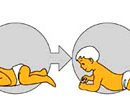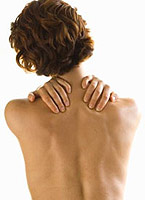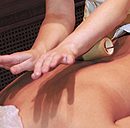Scotched sclerosis is a very volatile disease in which there is no predictable, firmly established flow nature. Each patient may have its own, different from other set of symptoms that may change from time to time, as well as the severity and duration of these symptoms.
Content
Multiple sclerosis – A very volatile disease in which there is no predictable, firmly established flow character. Each patient may have its own, different from other set of symptoms that may change from time to time, as well as the severity and duration of these symptoms.
Symptoms depend on which departments of the central nervous system were amazed by multiple sclerosis. Among the patients with multiple sclerosis there are those who have suffered only one small attack that manifested themselves in the loss of clarity of view, as well as those who have more symptoms expressed. Most multiple sclerosis begins with a sudden attack, which is also called exacerbation, followed by remission, t.E. The period without any visible clinical signs of the activity of multiple sclerosis.
After a few days or week, the intensity of symptoms may decrease, which leads to full or partial recovery.
In patients with multiple sclerosis, as a rule, the following symptoms take place: fatigue, muscle refueling, weakness, spasticity of hands and legs, pathological sensations, such as itching, pain or numbness, violation of the bladder and intestines, sexual disorders. Some of them are often observed, others – only in rare cases.
Since the symptoms of different people differ significantly, a flexible approach to their correction is required. Along with drug treatment, there are additional strategies, such as physiotherapy or diet. Therefore, no matter how good or bad can feel the patient, and how much of his symptoms are expressed, there is a wide variety that he himself, doctors and nurses can do in every particular case to achieve improvement. Pledge of good general well-being – Caring for your body and knowledge of a healthy lifestyle.
Tired
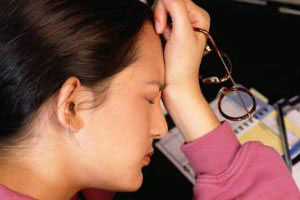 Fatigue or fatigue - one of the most typical and unpleasant symptoms of multiple sclerosis. Increased fatigue is observed about two thirds of patients with multiple sclerosis and can be stored for months and even longer.
Fatigue or fatigue - one of the most typical and unpleasant symptoms of multiple sclerosis. Increased fatigue is observed about two thirds of patients with multiple sclerosis and can be stored for months and even longer.
Not less than two types of fatigue. The first is constant fatigue, because of which even the simplest tasks are difficult to bring to the end. The fatigue of the second type appears suddenly in a few minutes of physical activity. As a rule, such fatigue is felt in the legs, and then disappears after a short rest, but the eyes can also be tired: while reading the vision worsens, but then again restored after a short break.
Fatigue, as a rule, becomes more pronounced in hot weather or after a hot bath and can also be exacerbated by increasing body temperature, for example, with a cold.
As a result, patients with multiple sclerosis, susceptible to increased fatigue, complain about a sharp deterioration in the quality of life in connection with this symptom. Fatigancy attacks can also lead to a general decline of strength, depression and sleep disorders.
Correction of increased fatigue
If fatigue is due to unspecified sclerosis, but with some other reasons, for example, sleep impairment, resulting in a sense of drowsiness in the daytime, then the initial disease should be determined and to treat directly. If the fatigue becomes a primary problem for a patient with multiple sclerosis, a thorough neurological examination should be carried out in order to eliminate any other causes of fatigibility. If the main cause of increased fatigue is multiple sclerosis, changes should be made to his lifestyle and occupation. Few drugs turned out to be effective in the fight against fatigue. However, patients with multiple sclerosis subject to excessive fatigue reported positive results achieved by them using therapy. Find out the doctor, what drug is suitable for your specific case.
There are unemployed methods of combating fatigue. For example, you should go to bed at the same time, to make frequent breaks for rest in your everyday classes and perform a complex of physical exercises with moderate muscular load. To control fatigue, techniques can also be used to help cope with stressful situations and correctly distribute their time, express priorities, plan their affairs in advance and simplify work. Cold shower or bath is also useful, and in hot weather - air conditioning.
Others may achieve effect with yoga or meditation in combination with exercise. Since the symptoms of multiple sclerosis are aggravated by overwork, it must be avoided, which will make the life of patients with multiple sclerosis less intense, although it is likely to not affect the course of the disease.
Spasty
Spasticity means an increase in muscle tone, and muscular convulsions arising from this may be accompanied by pain. In the process of the disease, loss of muscular power can occur in the hands and legs. These symptoms may gradually deteriorate, resulting in increasing the need for a support when walking.
Correction of spasticity With physiotherapy or hypotherapy. Special complexes include exercises for stretching internal thigh muscles, as well as femoral, foot and spine muscles. These exercises can be performed both independently and with someone else.
Stretching exercises help to fight spasticity and shortening muscles. Training this exercises should experienced physiotherapist.
Treatment of spasticity depends on the degree of its severity. There are common drugs to reduce spasticity, which are released in a pharmacy without a recipe. In recent years, a number of other drugs have been developed that have a positive effect with symptoms of spasticity. The attending physician will be able to advise what drugs will help reduce these symptoms.
Equality and coordination disorders
Problems with coordination and equilibrium arise if the sclerosis is raised by the brain - the brain section responsible for the coordination of movements. This can lead to loss of equilibrium when walking. It can also be difficult to take small items with hands. In addition, perhaps the trembling of the limbs (tremor).
Correction of equilibrium and coordination disorders
Usually, exercises (physiotherapy) are recommended for various levels of complexity and intensity, which are selected depending on the affected muscle group. These exercises contribute to improved coordination of movements and equilibrium, which in patients with multiple sclerosis are often broken. Patients with a moderate degree of neurological deficit, as well as those who suffer from symptoms associated with elevated temperature, can be easier to perform these exercises in water. Tremor often manage to eliminate drugs.
Water provides support that helps not lose balance during classes. In addition, water warns the physical activity associated with the heating of the body, which can exacerbate the symptoms of multiple sclerosis in some patients.
Pain
For many years it was believed that multiple sclerosis proceeds painlessly. Now it turned out that in the process of illness, some patients actually experience pain and discomfort. Pains can directly arise as a result of the activity of multiple sclerosis in the nervous system or be a consequence of its other symptoms. According to its intensity, pain can be both weak and very strong.
Along with pain in the joints and muscles, bundles and tendons, paroxysmal pain is also noted by a knife. Such pain may occur, for example, in the area of the face, if facial nerves are amazed. Also painful convulsions in their hands or legs, if the limbs have long remained in a fixed state.
However, in all dispersed sclerosis, chronic neurogenic pains are common due to erroneous nerve signals, which are generated by the foci of scarwing sclerosis in the head and spinal cord. This type of pain includes sensations that are usually described as «tingling».
How to cope with pain
The fight against pain involves the use of drugs, as well as non-drug approaches, depending on the type of pain, their origin of pain and concrete each individual patient.
An important component of overcoming pain in multiple sclerosis can be self-help, since it has a direct impact on the quality of life of the patient. Exercises, meditation and gradual muscle relaxation (according to the method of Jacobsen) will help to cope with spasms and muscle pain.
Exercise under the title «Progressive relaxation» was introduced by the psychologist Edmund Jacobsen
Need to find a quiet place with a carpet on the floor. Remove the shoes, unzow clothes, go on the back and close your eyes. Firmly squeeze the fists for ten seconds and focus on the degree of hand tension. Then, unwind the brushes - and you will notice the feeling of gravity and warmth. You do not need to repeat it. Then bend the elbows, straining biceps, at the same time. Continue - strain and ten seconds relax your facial muscles, then shoulders, chest, belly, back, buttocks, hips, caviar and feet. And then tell yourself that you are really more and more relaxing. Having finished, lie still a little before it slowly. First you can feel a light dizziness. It's completely normal, but try to move careful in the next few minutes. One Caution: Do not attempt to do this exercise if you have any muscles disease. Maybe it can somehow adapt it to your state, but first you need to consult with your doctor.
Other ways to facilitate pain include physiotherapy, hydrotherapy, massage, nerve electrostimulation, acupuncture and manual therapy
Violation of the bladder and intestines
Many patients with multiple sclerosis are constantly concerned about the search for a toilet due to the fact that with multiple sclerosis, muscles controlling the work of the bladder and intestines can be affected. The intestinal problems are less noticeable and, as a rule, are expressed in constipation due to insufficient physical activity in the later stages of the disease. Violation of the bladder, on the contrary, is often found with multiple sclerosis and leads to involuntary urine. In addition, some patients are not able to completely empty the bladder.
Correction of problems with bladder and intestines
In the event of such problems as urinary incontinence or incomplete emptying of the bladder, the doctor must first eliminate the bladder infection, which in case of identifying them require separate treatment.
Symptoms can be successfully relieved, but treatment should be based on the individual needs of the patient. To effectively control the functions of the bladder, it is useful to train the bladder and the pelvic dna muscles. For urgent urination, drug therapy is often used.
In easy cases, you can change the mode of receiving fluids, as well as abandon alcoholic beverages and drinks containing caffeine. Problems with intestines that arise in the later stages of the disease, are often easily eliminated by changing the diet. You should consume more products rich in fiber, fewer fats, as well as a sufficient amount of liquid. You can also try taking laxatives such as lactulose. May be appropriate use of mineral oil. Regular physical exercises are also recommended to normalize the intestines.
Do not comply with any special diet without prior consultation with the attending physician. If you find any information on this topic on the Internet, be sure to consult advice to your doctor!
Sexual problems
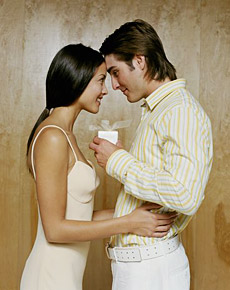 With multiple sclerosis, sexual problems are possible, such as impotence, reduced sexual arousal or painful sensations during sexual intercourse. In addition, multiple sclerosis can lead to loss of sensitivity in women or disruption of erection in men. Sometimes there are also psychological problems that can be a source of disabilities in intimate relations.
With multiple sclerosis, sexual problems are possible, such as impotence, reduced sexual arousal or painful sensations during sexual intercourse. In addition, multiple sclerosis can lead to loss of sensitivity in women or disruption of erection in men. Sometimes there are also psychological problems that can be a source of disabilities in intimate relations.
Correction of sexual problems
Many couples managed to find a way to maintain a normal intimate relationship, in addition, they communicate with each other, so «The sclerosis has no chance to get to the bed».
Apparently, the key to overcoming many problems is to discuss the role of partners in relationships, as well as the fact that each partner expects from another.
For men, there are a number of effective preparations and auxiliary devices. Women who felt the lack of lubricant into the vagina can use lubricant gels to reduce discomfort due to dryness in the vagina.
There is also a lot of sexual devices, for example, attached vibrators on batteries that can be purchased without a doctor's recipe.
For more recommendations, contact your doctor.
Sensitivity disorders
Sensitivity disorders are due to damage to the nerves in the spinal cord. As a rule, such violations occur in one or more limbs and are frequently found primary symptoms of multiple sclerosis. At the later stages of multiple sclerosis, these disorders are present in almost all patients and include the unpleasant sensations that may occur in various parts of the body and manifest as tingling, plugging, goosebumps and ears noise. Some patients suffering from these disorders feel as if their body or limb wrapped the tight belt, or experience burning, itching, the feeling of moisture and swelling.
Numbness can manifest itself in insensitivity to light touch, enclosure, as well as to cold and warmth.
Visible violations
The activity of multiple sclerosis in the brain can cause pathological movements of the eye (nystagm) and bias in the eyes (diplopy). One of the most common symptoms is the inflammation of the visual nerve (neuritis). Often this is an early sign of multiple sclerosis. Nerrit of the optic nerve leads to a blurred view, loss of color perception and / or pains behind the eyeball, which are enhanced when the eye moves. During remission, restoration does not always happen complete. It is advisable to undergo an examination from an ophthalmologist. For example, eliminate the shots in the eyes will help glasses with prismatic glasses.
Paroxysmal symptoms
Term «paroxysmal» Used to describe the symptoms that appear suddenly, often repeated and eventually disappear over time. Muscular, sensory or visual disorders can relate to paroxysmal symptoms. They tend to develop always on the same scheme and continue a few minutes or even less than 20 seconds. Often these symptoms are caused by motor or sensory stimuli. Touch-related - related to physical sensations, such as pain, smell, taste, temperature, vision, hearing, acceleration and position in space.
Some paroxysmal symptoms, such as speech disorders (dysarthria) and convulsions, are very characteristic of multiple sclerosis. Usually they are characterized by an early stage of the disease, but, as a rule, treat well.

